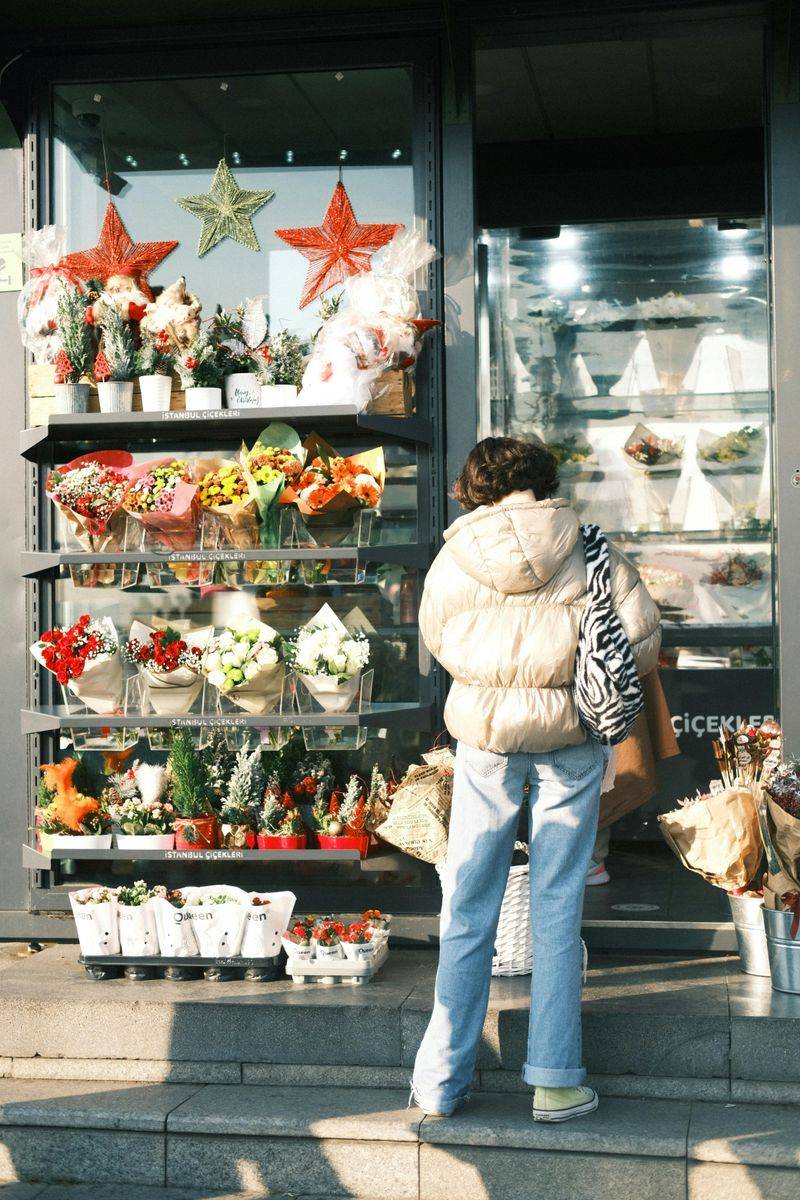12 Festive Shopping Mistakes That Quietly Wreck Your Holiday Budget Every Year

Holiday shopping can feel magical, but it’s also surprisingly easy to blow through your budget without even realizing it. Small mistakes add up fast, turning festive fun into financial stress that lasts well into the new year.
Many shoppers fall into the same traps every December, spending more than planned on things that don’t really matter. Understanding these common pitfalls can help you enjoy the season without the regret that comes with an empty wallet.
1. Buying Extravagant Decorations You Don’t Need

Flashy decorations catch your eye in stores, especially those oversized light-up reindeer or designer wreaths that cost more than your grocery bill. Retailers know how to make seasonal items irresistible, but most of these trendy pieces get used once and then collect dust in your garage.
The excitement fades quickly once the holidays end. Before dropping serious cash on décor, ask yourself if you’ll honestly use it again next year.
Many families already own plenty of decorations that work perfectly fine with a little creativity. Mixing what you have with a few inexpensive new touches creates a fresh look without breaking the bank or cluttering your storage space forever.
2. Hosting Over-the-Top Holiday Parties

Planning the ultimate holiday bash sounds amazing until you see the bills rolling in from catering, premium drinks, fancy decorations, and entertainment. Your guests probably care more about good company than whether you served gourmet appetizers or had professional lighting.
Going overboard creates financial stress that ruins your own enjoyment of the event. Potluck-style gatherings work beautifully and let everyone contribute their favorite dishes. Simple homemade treats and basic decorations create warmth without the hefty price tag.
Remember, people come to celebrate together, not to judge your party budget or compare your event to magazine spreads they’ll forget about next week anyway.
3. Upgrading Your Wardrobe for Every Holiday Event

Each invitation feels like it demands a brand-new outfit, especially when social media makes everyone look perfectly styled. Before you know it, you’ve bought three dresses, two suits, and accessories for events that last just a few hours.
These purchases add up shockingly fast and often hang unworn in your closet afterward. Rewearing and remixing what you already own shows creativity, not a lack of style.
Change up accessories, shoes, or hairstyles to create different looks from the same base pieces. Most people won’t even remember what you wore last year, and those who do probably admire your confidence in wearing favorites again instead of constantly chasing new trends.
4. Gifting Beyond Your Means to Everyone You Know

Your gift list keeps growing as you remember more coworkers, distant relatives, neighbors, and acquaintances who might expect something. Suddenly you’re buying dozens of presents to avoid seeming rude or ungrateful, stretching your budget dangerously thin.
The pressure to include everyone creates anxiety rather than joy. Setting clear boundaries about who receives gifts protects your finances and sanity. Focus on people closest to your heart rather than obligation-based giving.
Many adults appreciate honest conversations about skipping gifts or doing simple exchanges instead. True friends and family understand budget limitations and value your presence over presents that strain your wallet unnecessarily.
5. Splurging on Charity to Feel Generous

Seasonal giving campaigns tug at your heartstrings, making you want to donate more than you can actually afford. The holidays amplify pressure to appear generous, leading people to write checks that leave their own accounts dangerously low.
Helping others matters, but not when it threatens your financial stability or ability to pay bills. Sustainable giving means contributing amounts that fit comfortably within your budget year-round, not just during December.
Volunteering time costs nothing but provides incredible value to organizations and communities. Small, consistent donations throughout the year often help charities more than one large seasonal gift that leaves you scrambling financially for months afterward.
6. Subscribing to Multiple Holiday-Themed Services

Seasonal subscription boxes, premium streaming channels with holiday specials, and limited-time services seem harmless individually. Sign up for a few, though, and monthly charges quickly balloon into significant expenses.
These services often auto-renew, continuing to drain your account long after the holidays end and you’ve forgotten about them. Before subscribing, calculate the total cost for all services combined rather than considering each separately.
Many holiday movies and content are available through services you already have or free options. Check existing subscriptions first and skip temporary add-ons that provide minimal value. Set calendar reminders to cancel trial periods before they convert to paid memberships.
7. Booking Last-Minute Holiday Travel

Waiting until December to book flights and hotels almost guarantees you’ll pay premium prices for whatever’s left. Airlines and hotels know demand peaks around holidays, so they charge accordingly when inventory runs low.
Procrastination turns affordable trips into budget-busting nightmares that cost double or triple normal rates. Planning travel months ahead unlocks significantly better prices and more options for dates and accommodations.
Set alerts for fare sales and book early when prices drop. Flexibility with travel dates, even by just a day or two, can save hundreds of dollars. Consider alternative destinations or visiting family during off-peak times when everything costs less and feels more relaxed anyway.
8. Buying Gifts for Yourself While Shopping for Others

Those sale signs and limited-time offers become impossible to resist when you’re already in shopping mode. One extra item here, another there, and suddenly your cart contains as many things for yourself as for your gift list.
Justifying these purchases as rewards or necessities makes it easier to ignore how much they’re costing you. Shopping with a strict list and leaving credit cards at home helps maintain focus on your original purpose. The deals will exist later when your budget allows for personal purchases.
Take photos of items you want and revisit the idea after finishing holiday shopping. Often the impulse fades, proving you didn’t really need those things urgently despite what the sale signs claimed.
9. Chasing the Perfect Holiday Photo Session

Professional photographers charge premium rates during the holidays, knowing families want picture-perfect cards and social media posts. Matching outfits, special locations, props, and editing packages quickly turn a simple photo into a major expense.
Many of these images get used once for cards and then sit forgotten in digital folders. Smartphone cameras have improved dramatically and can capture beautiful, authentic moments without professional costs.
Natural settings like parks or your decorated home provide lovely backdrops for free. Friends with photography skills might shoot casual sessions affordably. The best holiday photos often capture genuine laughter and connection rather than overly staged perfection that costs hundreds of dollars to achieve.
10. Overvaluing Limited Edition Holiday Items

Seasonal packaging and “exclusive” labels make ordinary products seem special enough to justify inflated prices. Companies know collectors and gift-givers will pay premiums for holiday versions of regular items.
That limited-edition candle or special tin costs significantly more than identical products in standard packaging available year-round. Look past festive marketing to evaluate actual value and quality. The novelty wears off quickly while the extra cost permanently affects your budget.
Regular versions of products work just as well without the holiday markup. If you love seasonal items, wait until after-holiday clearance sales when prices drop dramatically. Smart shoppers recognize when they’re paying for packaging rather than quality, and choose to spend their money on things that matter more than temporary holiday branding.
11. Stocking Up on Just-in-Case Items You Never Use

Fear of running out drives people to buy backup decorations, extra gifts, surplus food, and emergency supplies that mostly go unused. These just-in-case purchases feel responsible but usually become clutter that wastes money and storage space.
Most holiday disasters people worry about never actually happen, making the preparation unnecessary. Buy what you actually need based on realistic planning rather than worst-case scenarios. If you do run short on something, quick store runs or creative solutions work fine.
Unused items from previous years prove you consistently overbuy out of unfounded anxiety. That money could go toward things you’ll definitely use or stay in your account for actual emergencies. Trust yourself to handle unexpected situations without stockpiling excessive supplies that become next year’s donation pile.
12. Letting Emotion Drive Your Purchases

Holiday nostalgia and sentimental feelings cloud judgment, making everything seem more necessary than it really is. Emotional shopping leads to buying things that feel right in the moment but don’t make sense financially.
Advertisers deliberately target feelings during the holidays, knowing people make less rational decisions when emotions run high. Take breaks from shopping when you notice emotions taking over your decision-making.
Sleep on major purchases rather than buying impulsively. Ask trusted friends or family members for objective opinions about whether purchases make sense. Your feelings are valid, but they shouldn’t control your budget. The holidays will feel just as special without every item that tugs at your heartstrings. Protecting your financial health shows genuine care for your family’s future beyond just this season.

Comments
Loading…